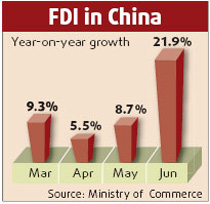The number of Chinese taking up farming fell by more than 80 million between 1996 and 2006, the results of a national agriculture census released online yesterday showed.
At the end of 2006, the National Bureau of Statistics (NBS) said, 70.8 percent of the people employed in rural areas were engaged in some type of agriculture, such as farming, forestry and livestock breeding. That was nearly 5 percentage points down from the end of 1996, the NBS said.
The rest of the workers were in the secondary and tertiary industries.
The number of migrant rural workers stood at 130 million, nearly 60 million more than a decade earlier, the NBS said, citing China's second national agriculture census.
Among migrant laborers, 64 percent were male, 82 percent were below 40, and 80 percent were educated to at least junior middle school level.
There were 530 million people in the labor force in rural regions and about 480 million, 90 percent, were working as of the end of 2006, according to the census results.
The findings, from the second national agriculture census in 2006, reflected conditions among 226 million rural households nationwide.
China's rural survey is the largest of its kind in the world. It collects data on agricultural production, the labor force and employment, living conditions and the environment of rural communities.
Local governments must make efficient use of the findings of the survey and conduct analysis of rural problems, so as to better guide work related to farming and rural areas, an executive meeting of the State Council, the country's Cabinet, ordered on Wednesday.
(China Daily, Xinhua News Agency February 22, 2008)


